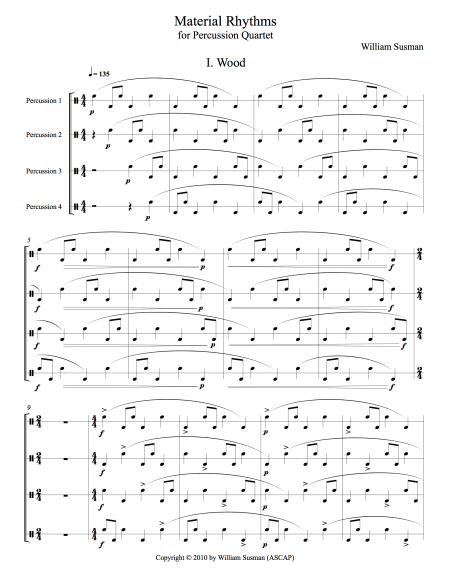In the Action of Quiet Rhythms no.1, the clave appears immediately in the right-hand in measures 1 and 2 playing a 3-2 clave over the left-hand playing a 2-3 clave. Layering the clave in both hands creates a 3 over 2 polyrhythm in measure 1 and, a 2 over 3 polyrhythm in measure 2 and, so on.
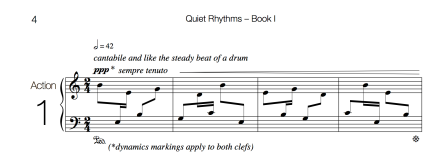
Starting at measure 89 through to the end at measure 175, there is an amplitude cross- fade every four bars. The 3-2 clave, clearly standing out in the right-hand, gradually morphs to the left-hand. The perception of the 2 bar clave and 1 bar polyrhythm moves in and out of focus as the volume changes.
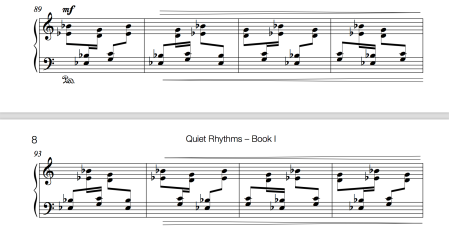
The amplitude cross-fade creates somewhat of an aural M.C. Escher effect where the ear may focus on either the left or right hand depending on the volume just as the eye may focus on the bird or the fish in varying degrees of clarity.
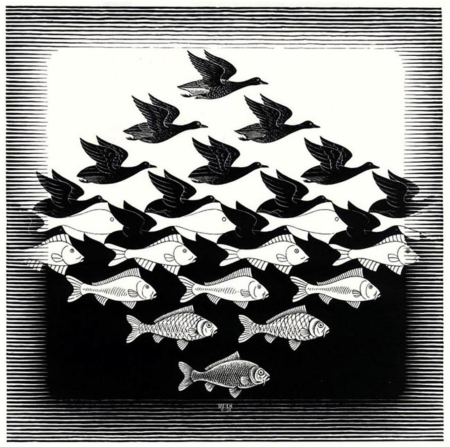
M.C. Escher
In the Prologue of Quiet Rhythms no. 18. a 3-2 clave rhythm starts at measure 5, but using accents on top of an even 16-note contrary motion pattern that contracts and expands every measure.
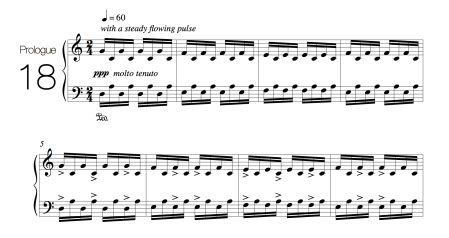
At measure 21 the accents switch to a 2-3 clave expanding in contrary motion every two measures.

And, then at measure 33, back to a 3-2 clave in a new texture of two-note chords alternating 5ths and 4ths over even single-note 16ths alternating 5th and 4th motion.

In the Action of Quiet Rhythms no. 18, the clave rhythm is augmented in a 4/2 meter creating a slow meditative quality. The middle line or L.H. is playing the primary 3-2 clave in measures 1-2, 3-4, 5-6, 7-8 at half speed against the high and low pitched octave drones in the top and bottom staves.
Within each measure there is a 3 against 2 polyrhythm (as in Action 1 above). In measure 1, the 3 against 2 polyrhythm sounds in the middle and top staff. In measure 2, it starts in the bottom staff and then moves from the middle to the top. In measure 3, it traverses middle, top, middle, bottom, middle.
The overall design is a 3-2 clave hocketing pattern of the top and bottom “drone voices” within an 8-bar isorhythmic cycle. It begins again at measure 9 for another eight measures contrasting in a major key and flipped with the bottom staff sounding first.
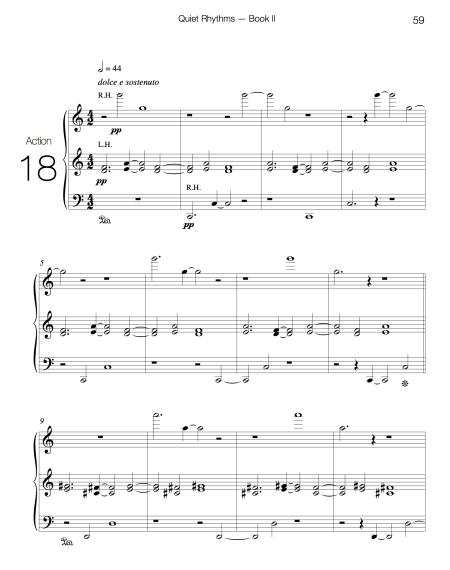
Up until measure 17, the middle staff left-hand chords are a static back-and-forth of 3rd and 4th intervals. At measure 17, they change to a rising pattern of 5ths and 4ths for eight measures.
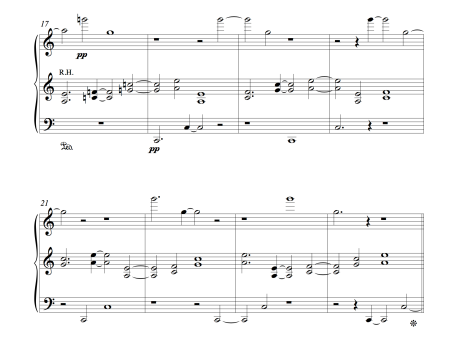
At measure 25, the pattern goes back to the rhythmic design of the opening measures 1-8, but the intervallic movement is the opposite: The top staff moves up and the bottom moves down while the middle moves 4ths to 3rds.
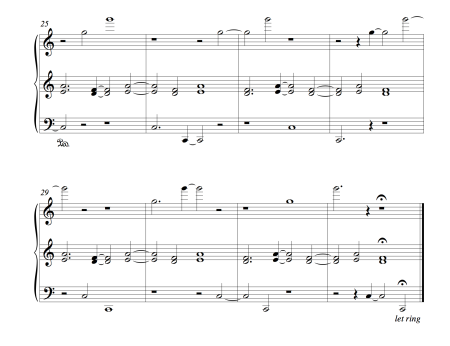
Action 18 follows a 32-bar AABA form found in much of American popular song. AABA corresponds to the measures as follows: A (1-8) A (9-16) B (17-24) A (25-32)
An important note is that throughout this series of piano pieces the Action is always composed first. In most cases, the Prologue is sort of a rhythmically smoothed out version of the Action which typically explores a syncopated pattern.
Listen to Quiet Rhythms no. 1 performed by Francesco Di Fiore
Listen to Quiet Rhythms no. 18 performed by Erika Tazawa
